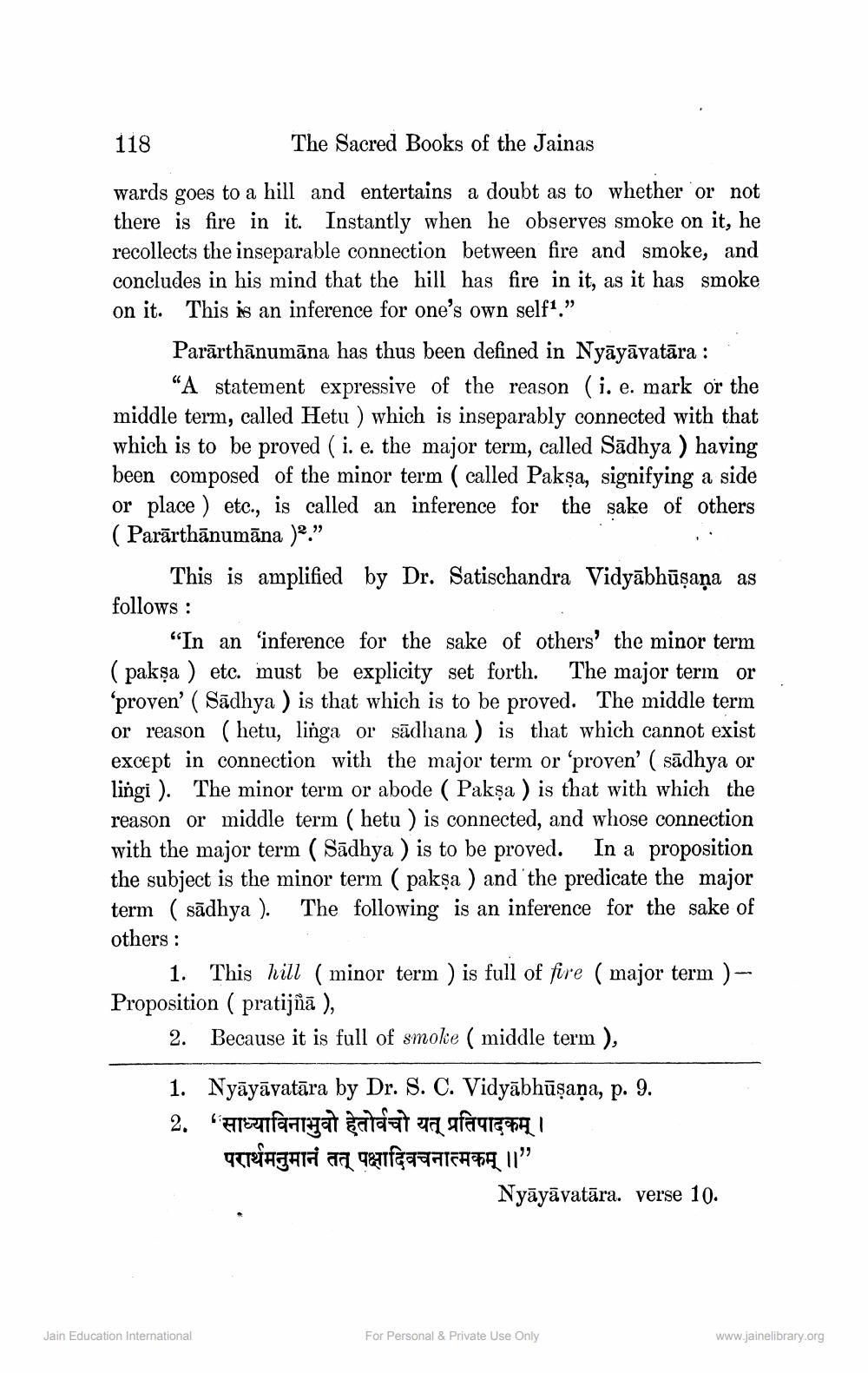________________
118
The Sacred Books of the Jainas
wards goes to a hill and entertains a doubt as to whether or not there is fire in it. Instantly when he observes smoke on it, he recollects the inseparable connection between fire and smoke, and concludes in his mind that the hill has fire in it, as it has smoke on it. This is an inference for one's own self.”
Parārthānumāna has thus been defined in Nyāyāvatāra :
“A statement expressive of the reason (i. e. mark or the middle term, called Hetu ) which is inseparably connected with that which is to be proved ( i. e. the major term, called Sādhya ) having been composed of the minor term ( called Paksa, signifying a side or place ) etc., is called an inference for the sake of others (Parārthānumāna )."
This is amplified by Dr. Satischandra Vidyābhūşaņa as follows:
"In an 'inference for the sake of others' the minor term ( pakşa ) etc. must be explicity set forth. The major term or ‘proven' ( Sadhya ) is that which is to be proved. The middle term or reason (hetu, linga or sādhana ) is that which cannot exist except in connection with the major term or 'proven' ( sādhya or lingi ). The minor term or abode ( Pakşa ) is that with which the reason or middle term ( hetu ) is connected, and whose connection with the major term ( Sādhya ) is to be proved. In a proposition the subject is the minor term ( pakşa ) and the predicate the major term (sādhya ). The following is an inference for the sake of others :
1. This hill ( minor term ) is full of fire ( major term ) - Proposition ( pratijñā ),
2. Because it is full of smoke ( middle term ),
1. Nyāyāvatāra by Dr. S. C. Vidyābhūşaņa, p. 9. 2. "Enfaatjat ataiat za afaqat! परार्थमनुमानं तत् पक्षादिवचनात्मकम् ॥"
Nyāyāvatāra. verse 10.
Jain Education International
For Personal & Private Use Only
www.jainelibrary.org




